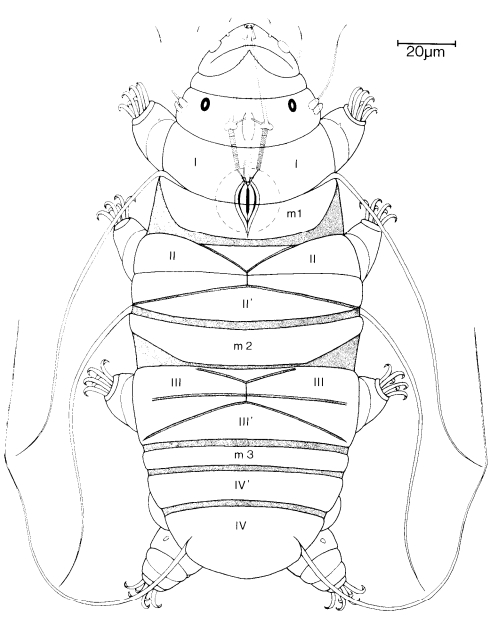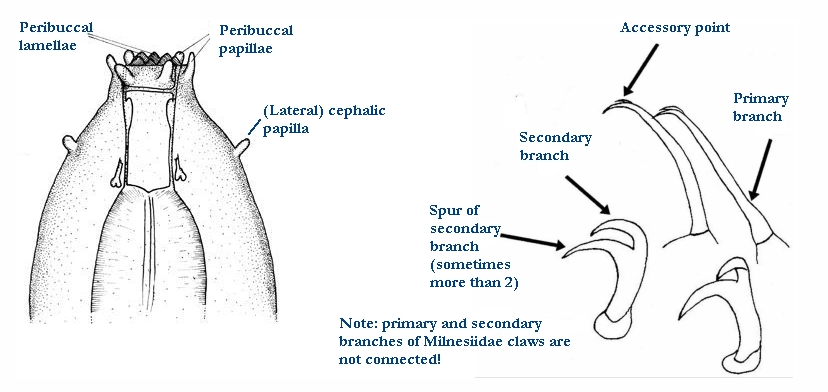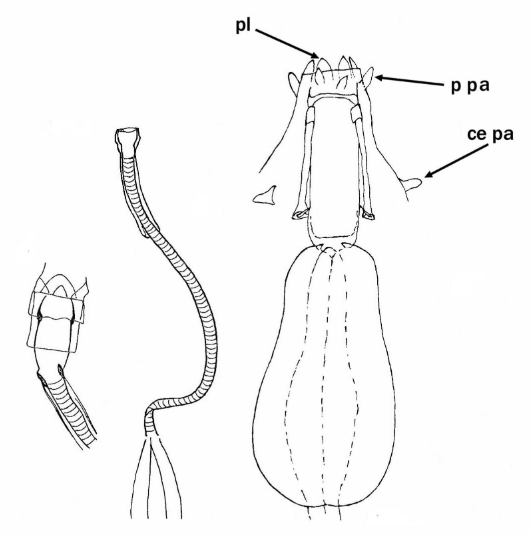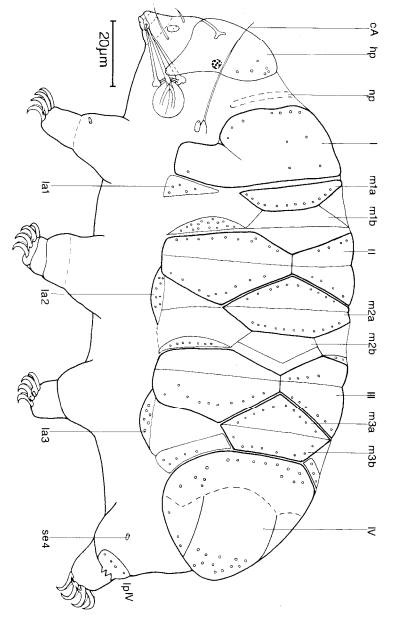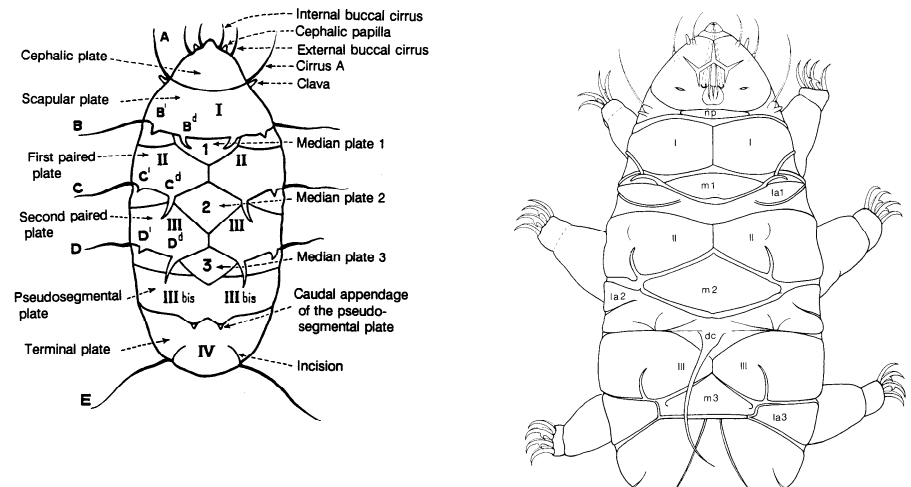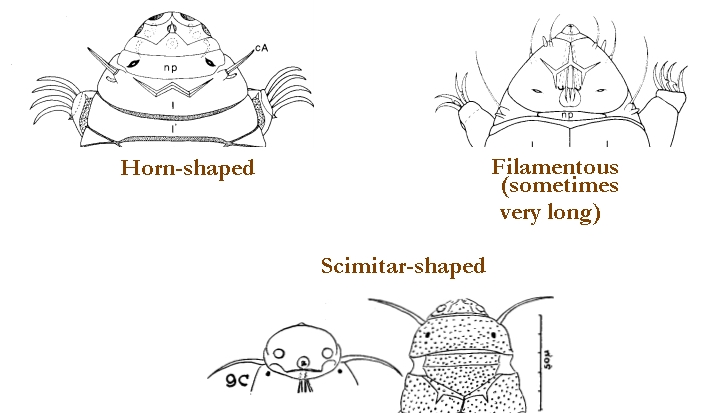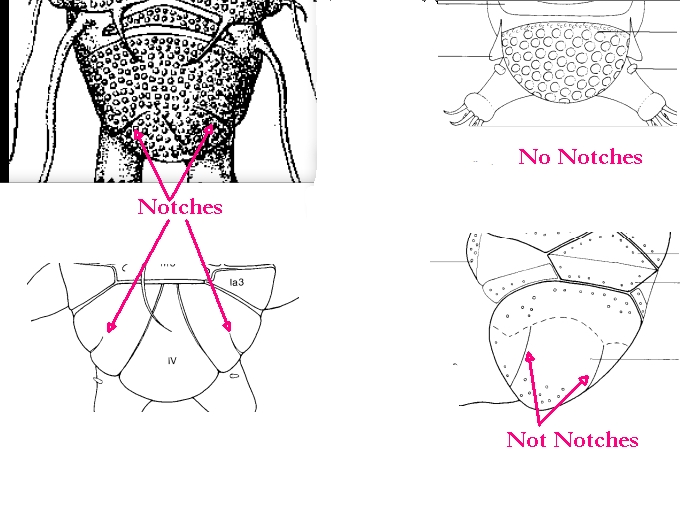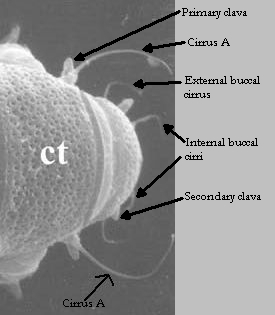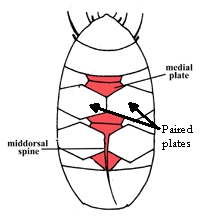From Kristensen 1987: “Echiniscidae with black eyes, flexible buccal canal, presence of calcified stylet supports. Segmental plates II and III paired with unpaired posterior element; median plates 1, 2 and 3 and the unpaired pseudosegmental plate IV’ bar- shaped; with dome-shaped secondary clavae. Colour reddish brown. Description: Proechinicus has unique dorsal plates. A series of 12 strongly sculptured plates is present. A relatively small faceted head plate and a large neck plate are present on the head segment. A large unpaired scapular plate (I), paired segmental plates II and III, and an unpaired caudal plate constitute the segmental plates of the trunk. Segmental plates II and III each consists of four pieces, laterally they are not completely separated. The paired central plates are the dominant element, each paired plate has a deep transverse depression with fine granulation. A very small median element is located anterior to the paired plates and a large element (pseudosegmental plate II’ and III’) is located in back of the paired plates. The caudal plate (IV) is small and with lateral indentations associated with cirri E. The pseudosegmental plate IV’ is not separated from the caudal plate, especially in the 2-clawed larva the separation is only a line. Between the pseudosegmental plate IV and the caudal plate a pillow-shaped elevation with strong sculpture is present on each lateral side. The intersegmental plates consist of undivided median plates 1, 2 and 3. The long bar-shaped median plates in Proechiniscus differ from those plates in other members of the Pseudechiniscus-line, where the plates are only located in the median. The many well developed dorsal plates, the large head, and the short legs give the animal a clumsy appearance (Petersen, 1951). The sculpture of the dorsal plates is coarsely granulate, finer where the plates form folds. Outside the plates the coarse granulation is found laterally on each side, in connection with the first three pairs of legs and on the leg itself. The leg granulation is homologous with the leg plate, but a serrated collar or spine fringe on leg IV is absent. The finely punctuated sculpture seen between the dorsal plate and the ventral part of the animal, consists of hexagonally arranged pillars in the epicuticle. The coarse granulation is formed by a heavy sclerotization of the outer epicuticle. The pillars are very large and they fuse together to form a lacunar system. The cephalic sense organs consist of small papillate primary clavae, cirri A with papillate cirrophore and thin; dome-shaped secondary clavae, and external and internal cirri, both with indistinct bulbous cirrophore. Cirri A and the primary clavae are laterally inserted on the neck plate. The trunk cirri are long and flexible. Cirri C and E are always present in adults, cirri B may be missing in males, and cirri E may be the only trunk cirri present in the 2-clawed larva. Leg papillae are found both on legs I and IV. The claws only have secondary spurs on the internal claws. The buccal apparatus consists of a long buccal tube with a flexible posterior part; relatively short stylets, which insert via small, CaCO3-encrusted stylet supports on the buccal tube, and a pharyngeal bulb with placoids of the Pseudechiniscus-type. Large cross-striated stylet muscles are present between the furcae of stylets and the anterior part of the pharyngeal bulb. Strong muscle attachment fibres in the pharyngeal bulb connect the stylet muscle with small apodemes located terminally to the posterior margin of the buccal tube, which continues inside the pharyngeal bulb. The buccal tube has a large cuticular thickening, where the stylet supports insert. The male is present in all known populations of Proechiniscus. The testis is a very large sac with hundreds of round-headed sperms. The gonopore is an ovoid papilla with a crescent-shaped opening, a typical heterotardigrade male gonopore. The 2-clawed larva has finer sculpture than do the adults, and the plates are less distinct.”
Black eyes, flexible pt, 3 medial plates (full width), pseudosegmental plate, no notches.
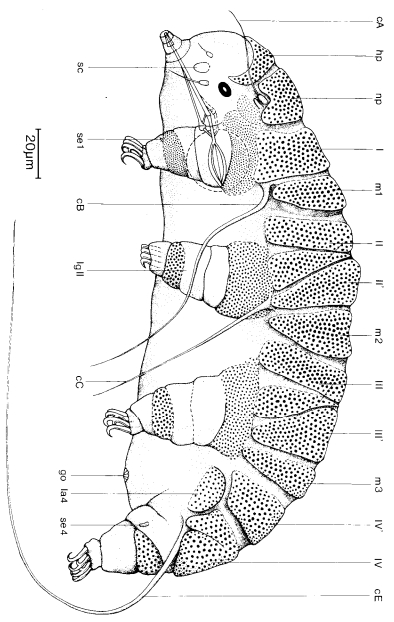
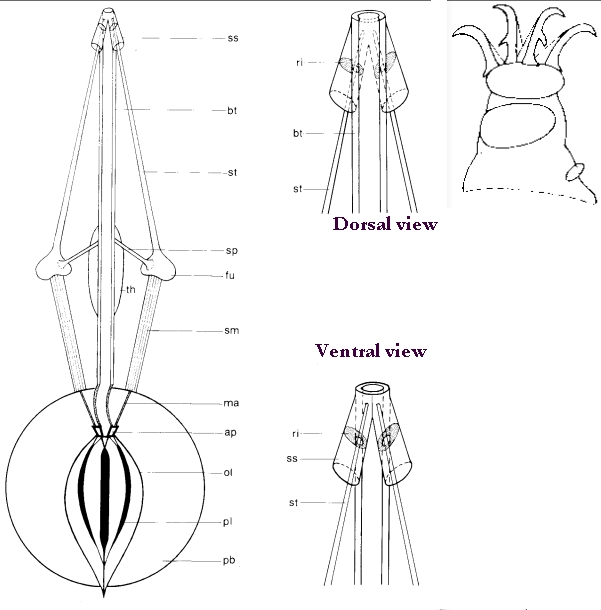
Citations:
Kristensen RM. 1987. Generic revision of the Echiniscidae (Heterotardigrada), with a discussion of the origin of the family. pp. 261-335 in Bertolani R (ed). Biology of Tardigrades: Selected symposia and monographs.
